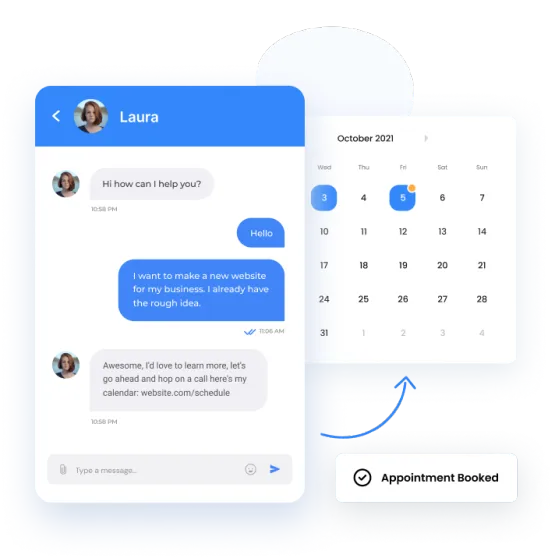“Allie, what is a marketing funnel?”
When I say marketing funnel, I’m talking about the kind of funnel that you absolutely must get right if you want to sell products and run an efficient business.

Especially in the online world, where consumers have A TON of options and noise coming at them, a marketing funnel is made up of different pieces that will help you gain credibility and their trust. Through each level of the funnel, there are different stages of trust and types of content that the potential client will be prepared to consume, in relation to where they are with “getting to know” you and your business… not so different from dating. You wouldn’t want someone to ask you to marry them on the very first date, just like you likely won’t buy from someone without any sort of prior introduction.
There are basically two ways to market a business.
1. Cold Calling/Billboard in a Desert Approach
For businesses who are purchasing lists of phone numbers in order to call and pitch, their close rates are at about 1%. That’s a lot of wasted effort on the other 99%. Why? We have no prior proof that this audience is even remotely interested in what we have to give them. They’re not necessarily qualified leads, and they likely have NO CLUE how much our product rocks. Without that initial contact and time to start building rapport and a relationship, a swift no and a kick out the door (or in this instance, a phone “click”) and our contact with that person is gone.
You wouldn’t place a billboard in a desert, would you? Trying to reach clients when you know nothing about them or their level of interest is a complete waste of time and money.
2. Meeting the future customer on their turf
On the other end of the spectrum, businesses who are more focused on creating valuable content and placing it where a customer or client can find it when they are ready to begin the buying cycle have a much higher close rate. Potential customers can engage with your content (blog posts, infographics, videos) and learn about your company and its services without a cold call from a salesperson. Not only are they more receptive to the sales process (and not instantly tense and waiting for their chance to hang up), but they are a high-quality lead because they’ve already shown interest in what you have to offer them. Close rates for these types of customer contacts are typically close to 50%.
Most businesses are somewhere in the middle of these two examples.. they haven’t yet “perfected” their sales funnel, but they aren’t exactly calling strangers out of the blue to sell their products.
There are basically four stages to the sales funnel, and each stage needs to be treated accordingly.
A successful marketing funnel has EACH of the following stages:
“Create < Market < Sell < Delight”.
Step #1 – Problem/Need Recognition – Create
If your future client doesn’t recognize that she has a need that must be filled, she’s not yet ready to make a purchase. In this stage, it’s important to create simple, easy to consume content, in order to start help her start realizing she might need help solving a problem. In the case of coaches and creatives, this would mean creating content
Step #2 – The Search for Information – Market
A search for more information is triggered once the problem has been recognized. Depending on the size of the need at hand, the hunt for information can take on a variety of forms and lengths of time.
Step #3 – Considering the Options – Sell
Your customer will start comparing her options once the problem has been recognized and she has begun her search. She will start sifting through the available options, including information provided, value perceived, and packages offered. Depending on the size of the purchase ($50 Facebook image design or $20K coaching package…), this option consideration can drastically vary in size.
Step #4 – The Purchase
Ah, yes. Your notifications let you know the purchase decision has been made. Your customer has identified her problem, sought out the information to solve that problem, shopped around and chose YOU as the best option to solve her problem. In this stage, it’s important to remember that customers are easily swayed by negative feedback and a difficult to navigate website; two VERY important keys to remember in order to close the deal
There is a piece of the puzzle that most funnel education neglects to mention. The journey is not complete just because the customer has bought from you.
Step #5 – After the Purchase – Delight
This is where the magic will happen for your business. The step AFTER the sale is even more important that the first three steps of the marketing funnel. You never want your clients to feel any level of buyers remorse or regret (something I’ve learned the hard way).
You want your customers to be greeted by a thoughtful onboarding process, personal attention, and all the resources they need to use and enjoy your product successfully. Give them this experience, and they’re more likely to confirm to themselves that they made the right choice. A confident and happy buyer is likely going to shell out the recommendations, referrals and endorsements. However, on the other hand, if your brand new customers experience disappointment and regret after their purchase, they’re more likely to request refunds, write negative reviews, and recommend that others in their social circles purchase from your competitors – a business killer in the online world, especially.




